![]() |
![]() |
|
![]() |

Wisła Fax - numer 43  
październik, 2007 rok Sponsored by Global Greengrants Fund & Fundacja im. Stefana Batorego
Introduction
For 14 years Klub Gaja has been carrying on the National Campaign „Teraz Wisła” (“The Vistula Now”) dedicated especially to the Queen of Polish Rivers, but also to general water management issues, river valleys protection and dam building related problems. For 7 years water management agencies, local authorities, the hydroengineering lobby and a range of vested interests have been promoting and pushing through a concept of constructing a new dam on the Vistula at Nieszawa, supposedly to remedy the problems with the existing Włocławek dam.
Thanks to the financial support of US Global Greengrants Fund and Stefan Batory Foundation in Poland, we are able to present this publication to you, wherein we intend to introduce the essentials concerning the Vistula natural and cultural values, the planned Lower Vistula Cascade (dam system) and the future of the Lower Vistula Valley.
The Vistula, “queen of Polish rivers”
The Vistula, “queen of Polish rivers”, is the last big river in Europe whose large sections still keep its natural character. From its sources in the Silesian Beskid range where the Biała (White) and Czarna (Black) Wisełka's join at a locality named Wisła, all the way down to the Gulf of Gdańsk, the Vistula constitutes a rich and diversified ecological corridor. It is 1047 km long, and its drainage basin of 198,000 sq. kms covers 53.9 % of Poland's area. No wonder, the Vistula is an important national history symbol.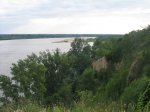
A vast expanse of the Vistula has Europe's last remaining landscape typical of a natural, unregulated river. The forked bed, numerous islets, projecting cliffs, sandbars and backwaters, as well as riparian forests create unique and beautiful harmony, unseen on those rivers which have been altered by regulation.
While reconstruction of the lower Vistula has severely affected long distance fish migrations, the river is still an important migration route. As indicated in the 1995 IUCN Poland's paper Vistula as an Ecological Corridor. State – Functioning – Threats, 44 species of fish have been found in the Vistula river system during the last decade, including salmon, common sturgeon, vimba, sea trout, river trout, knife, Danube salmon, eel, pike, pike perch, sheatfish, ruff, river lamprey, nase, barbel, and bitterling.
During an environment ministerial conference in Sofia, 1997, the Vistula Valley was recognized as an ecological corridor vital to the preservation of European biodiversity, linking the North (the Baltic Sea) and South of Europe (the Carpathians), as well as the East (via the Bug - Wisła corridor) and the West (via Noteć – Warta).
Due to its natural values, particularly biodiversity, the protection of the middle course of the Vistula Valley has also been recognized as a priority in terms of the Ramsar Convention.
The World Conservation Union (IUCN) states that "Poland's rivers with intact or slightly altered floodplains are important refuge areas and ecological corridors. ... The Vistula (between Zawichost and Płock) and the lower Oder command special attention. The Vistula is among the last rivers in Europe which have not been fully regulated”.
A 1991 motion of the Polish Academy of Sciences (PAN) Conservation Committee states: "Among the many valuable valley regions, the middle course of the Vistula between Zawichost and Płock stands out as a unique remaining instance of natural big river landscape, exceptional in Central Europe. Along with the Biebrza Marshlands and Białowieża Primeval Forest, it is a natural area of all-European importance. ... Its riparian alluvial forests are the richest forest biota on the continent, analogous to some rainforests of the tropical zone... About 62% of all European inland bird species find refuge in the alluvial forests".
The Vistula offers at least 6 types of habitats named in the Annex I to the EU Habitat Directive, including 6210 – xerothermic swards, and 91EO – willow alluvial forests, poplar alluvial forests, alder alluvial forests, and ash alluvial forests, considered of priority importance.
Many areas within the Vistula Valley or its impact zone are parts of the Nature 2000 network. They were designated on the basis of both Directive 92/43/EEC on the conservation of natural habitats and of wild fauna and flora (Habitats Directive) and Directive 79/409/EEC on the conservation of wild birds (Birds Directive).
The inter-levee basin of the Vistula is an important migration route for numerous mammal species. This includes amphibious mammals but also many terrestrial hoofed or predatory mammals. The Vistula inter-levee basin is a crucial part of spring and autumn migrations of many bird species, in particular fishhawk, lesser black-backed gull, Caspian tern, and black tern. The Vistula is also an important living place for grey heron, kingfisher, sandmartin, white wagtail, common sandpiper, greenshank, broad-billed sandpipers. Overall, ca. 300 bird species can be found, including 180 which breed here. To some of them, the unregulated condition of the river is important. Two thirds of Poland's bird species are born or live here, including many rare and endangered ones, whose survival in Poland and Europe depends on the preservation of breeding and feeding grounds in the middle Vistula valley. Many species of which there are no more than 60 couples in Poland find their last and most essential refuge in riverine valleys. This includes stone curlew, Mediterranean gull, little gull, and whiskered tern.
Apart from being a natural rarity, the Vistula has a vital place in the cultural history of Poland, a symbol cementing the Poles' national unity.
Towns and cities on the Vistula represent a wide range of epochs and architecture monuments dating back to the origin of the Polish statehood. The most interesting ones certainly include Sandomierz, Kazimierz Dolny, Płock, Chełmno, Grudziądz, and Gdańsk. Cities such as Warsaw, Cracow and Toruń have been enlisted in the World Heritage of the UNESCO Convention on the preservation of the world cultural and natural heritage. This means that the conservation of the Vistula is directly related to the preservation and care of Poland's national culture and tradition.
The Vistula with its natural condition presents a unique opportunity for the sustainable development of local communities which can and should benefit from the river cultural and natural assets.
Włocławek Dam Pro's and Con's
The Włocławek dam was constructed during the Communist rule, when Poland's approach to the management, future and role of rivers was largely based on the Soviet hydroengineering school, nicknamed the “river diversion school”. Built in 1962 – 1970, the Włocławek dam was one of the bigger projects of the “river taming era” in Poland. The dam has been operational on the lower Vistula up to now. After the 37 years of its operation, it is worthwhile looking closely at the benefits it was supposed to bring about and whether the projected benefits were identified correctly.
Five main benefits of the Włocławek dam were meant to be:
1. development of water-consuming industries in Płock – Włocławek area;
2. development of water transport on this section of the river;
3. helping with water supply for regional agriculture;
4. expansion of freshwater fishing industry;
5. tourism and recreation in the reservoir.
Existing documentation and reports by independent experts lead to conclusion that the projections did not come true at all since:
- no industrial development in the reservoir area has taken place;
- there was no expansion of water transport on this river course;
- no irrigation system using Włocławek dam waters was established;
- the fishing industry was actually negatively affected;
- examples of tourism base development in the reservoir area are marginal.
Moreover, the Włocławek dam was supposed to reduce the flooding risk. In reality, far from reducing the flood risk, it is presently increasing the risk due to insufficient dam capacity and reduced flow speed resulting in possible downstream slush-ice jams.
The actual development of the area around the reservoir, and rise in employment related to the dam and reservoir cannot be counted as positive outcomes of their existence, either. The lifting of water in Włocławek area has in no way improved the region economic activity.
On the other hand, definitely negative impacts include:
- arrested debris transport and downstream bed erosion;
- negative impact on migratory fish populations;
- negative impact on other elements of natural environment.
As demonstrated in a number of studies, the Włocławek dam construction resulted in river bed erosion caused by interrupted continuity of debris transport.
In 1968, as a result of the Włocławek dam construction the migratory population of Vistulan vimba became practically extinct and the trout catch was dramatically diminished. At the same time, the damming of the river prevents fish from migrating towards the headwaters which may lead to total extinction of winter Vistulan salmon trout population.
The building of the dam has also resulted in the virtual withdrawal of many valuable and rare bird species which require protection according to BirdLife International criteria or are named in the Polish Red Data Book of Animals such as stone curlew, ringed plover, common sandpiper, little tern, common tern, goosander.
Sandbanks and silt areas have irretrievably disappeared, most of willow and poplar alluvial forests, as well as precious plant communities of xerothermic swards, photo- and thermophilous ecotones, thermophilous forests and brushwoods have been destructed.
In summary, the Włocławek dam has failed the expectations, and the balance of social, ecological and economic losses and benefits proves negative. The only real benefit of the dam is electricity generation. The profits, however, do not find their way to the local community.
Proponents of new dams on the Lower Vistula often use the Włocławek dam poor technical condition and possible building disaster as an argument to promote a proposed Nieszawa dam among the local community and media.
Official documents from 2004, 2005 and 2006 such as Assessment of the technical and safety conditions of hydroengineering structures of the Włocławek dam or Verification of measurement and control equipment readings on the Włocławek dam concerning studies of the Włocławek dam technical condition do not seem to confirm this information while pointing out some technical irregularities.
According to the official reports and expert studies reviewed by Klub Gaja, the technical condition of the Włocławek dam is not the greatest risk factor. This view seems to be confirmed by the 2006 decision of the Włocławek Prosecutor's Office to dicontinue investigation of the possible risk of a hydroengineering disaster at the Włocławek dam resulting from failure to build a dam at Nieszawa pointing out that „no imminent danger of disaster is involved”. Enormous yearly expenditures on the dam safety improvement do have some effect, yet the measures taken are often of temporary nature.
Pro's and Con's of Nieszawa Dam Construction
While the Polish Government has (at least formally) dropped the plans to build a cascade of dams, it has supported the construction of a new dam downstream from Włocławek. The letter of the Director of the Ministry of Environment Water Resources Department to Klub Gaja from December 19, 2001 reads: "…the Polish goverment is not planning to construct further dams between Warsaw and Gdańsk. A supporting dam at Nieszawa is a separate matter and the Polish government has repeatedly presented its position that the dam shall be designed so as not to necessitate, through advancing erosion, the building of subsequent dams.”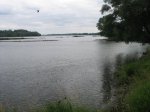
However, the construction of the Nieszawa dam will not solve the key problems of the Włocławek dam ponding. What problems is it supposed to solve then? Its main purpose is to ensure effective long-term security and correct functioning of the Włocławek dam by lifting and stabilizing the minimum level of downstream water in accordance with the project appraisal.
Other mentioned benefits of the Nieszawa dam construction include (much like at Włocławek years ago):
- reducing bed erosion downstream from the Włocławek dam;
- electricity generation;
- economic revival of the Kujawy region;
- touristic development of the new reservoir area.
The Nieszawa dam would reduce bed erosion downstream from Włocławek but only in the new ponding area. On the other hand, it seems very likely that due to its substratum being highly prone to washout the erosion downstream from Nieszawa would be considerably deeper and more widespread than it is downstream from Włocławek at present. The reason the Vistula bed down the stream erodes is its dragged debris being completely arrested and deposited in the Włocławek reservoir (ca. 1.7 million cu. ms per year). Thus, instead of a lasting solution, we actually face shifting the problem a few dozen kilometers down the stream. If we take the total of the proposed Nieszawa ponding expanse and add the ca. 57 kms of the Włocławek dam ponding, we find that more than one hundred kilometers of the Vistula course is going to be altered. It is important to note that the ponding leads to changes in humidity conditions in adjacent areas and permanent flooding of valley bottom area; the damming would result in the disruption of the continuity of the river system, changed water flow rate, and altered physico-chemical properties of the water.
Upon a thorough analysis of benefits, it must be pointed out inambiguously that the main financial benefit of the Nieszawa dam construction will be the profit from the electricity generation.
Studies projecting the development of tourism around the proposed reservoir and expected economic revival are also overly optimistic. In general, there would be little difference between the proposed Nieszawa and the existing Włocławek reservoirs. As demonstrated, the Włocławek dam has brought about no significant benefit for the touristic development or economic revival.
Moreover, the Nieszawa dam would have an additional negative impact on the natural environment, including migratory fish population.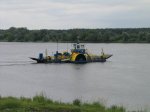
Moreover, the Nieszawa dam construction will likely entail withdrawal of many precious and rare bird species. Conversion of this section of the free-flowing river into a flow-through reservoir would lead, among other effects, to disappearance of sandbars and sandy islands along with existing alluvial forests. These changes would probably result in the withdrawal of the following birds: common sandpiper, ringed plover, kingfisher, garganey, corn crake, goosander, mew gull.
Moreover, Klub Gaja believes that since May 1, 2004, that is since the day Poland joined the European Union, the plans to build a dam at Nieszawa on the Vistula have been in contradiction with such European laws as Directive 92/43/EEC on the conservation of natural habitats and of wild fauna and flora (Habitats Directive) and Directive 79/409/EEC on the conservation of wild birds (Birds Directive), Directive 85/337/EEC on the assessment of the effects of certain public and private projects on the environment (ammended by Directives 97/11/EC i 2003/35/EC) – so called EIA Directive – and Directive 2001/42/EC on the assessment of the effects of certain plans and programmes on the environment – the ‘strategic environmental assessment Directive’ – or, finally, Directive 2000/60/EC establishing a framework for the Community action in the field of water policy, so called Water Framework Directive (WFD).
Important to note, the stretch of the Vistula intended to be lifted as a result of the Nieszawa dam construction is protected as a Special Bird Protection Area PLB 04003 "Lower Vistula Valley”. The proposed ponding section also includes a potential Special Habitat Protection Area PLH 040004 "Włocławek Vistula Valley”, and three more Special Protection Areas - Nieszawa, Dybowo and Solec Vistula Valley's are within the area of its impact. None of the four SPA's mentioned above has been formally submitted by the Polish Government to the European Commission. Nevertheless, since all four meet all the scientific criteria of the Habitat Directive, until the final decision the Commission is treating them as if they were protected.
In the first quarter of 2006 the Polish Government applied for the funding of the construction of the Nieszawa dam from EU funds. In early 2007, € 515 mln from the Operational Program “Infrastructure and Environment” were assigned by the Polish Government to finance the construction of the dam at Nieszawa. In the end, the building of the Nieszawa dam landed in the reserve projects list. In July 2007 the National Water Management Board made public the winning tender for the project perversely named “Environmental Safety of the Włocławek Dam” as part of the Operational Program “Infrastructure and Environment”. The winning company was Hydroprojekt Warszawa. Klub Gaja fears that committing the study to a company who has long been interested in building a dam at Nieszawa may affect the reliability and impartiality of the study.
At the same time, it should be emphasized that from the perspective of society the most important problem to solve should be the security of the Włocławek dam, that is slush-ice jams, insufficient capacity of the dam and its reduced stability. The solution should be focused on solving the security problem in a way which is most favourable for economic, social and environmental reasons. Analysis of various options of the Włocławek dam security problem solution leads to the conclusion that the proposed option of constructing a dam at Nieszawa is preferable only from the perspective of the energy sector. In Klub Gaja opinion, the cheapest and the best balanced against economic, social and environmental considerations is the option of decommissioning the Włocławek dam and gradual transformation of the existing reservoir back into a free flowing river, maintaining the existing road crossing of the Vistula.
Who Is Gaining and Who Is Losing or Will Lose on Włocławek and How Much?
“Thus the Sejm of the Republic of Poland deems it necessary to safeguard the existing dam in Włocławek against the building disaster threatening it through the realization of this project and granting it a status of a multiannual program, established by a law. Assuming the commercial nature of project financing, the use of public funds shall be limited to the necessary minimum assigned to environmental conservation, and their spending will be distributed over the whole construction period, which is defined as about 4 years.”
This is a passage from the Sejm of the Republic of Poland motion from December 22, 2000 on the realization pf the project Nieszawa – Ciechocinek Dam.
Almost 7 years have elapsed since. The issue of the Włocławek dam stability has not been definitely solved. The Nieszawa dam neither has been built nor is likely to be built in the nearest future – despite actions taken by goverment agencies. Throughout all these years the Polish taxpayer has been paying on one hand for studies, plans, documentation etc. Concerning the planned dam construction at Nieszawa and on the other hand for all sorts of repair and modernization works on the Włocławek dam related to safety improvement, maintenance and operation. 
All the government documents and decisions concerning plans for the Nieszawa dam clearly stated that the project may only be realized for private investor monies, due to limited capabilities of the national budget. The Minister of Environment writes in his March 30, 2000 letter to Klub Gaja, “The problem of economic viability should be left to the prospective investor who will declare investing their own capital into the construction. In this situation costs to the State Budget would be minimal. Moreover, the proposed method of financing guarantees the project completion within the projected 4 to 5 years deadline, which is the shortest in comparison to alternative solutions which would have to be financed by the State Budget.”
7 years have gone by. Far from fulfilling the declarations, no investor seems to have invested any money into the project. RP Government decisions consistently stressed that the project was to be realized by engaging significant private capital resources. The participation of the Treasury, or public monies, was supposed to be limited to minimum. Unfortunately, the following years have only seen more studies and more spending of public, not private money. The State Budget assigned 1,000,000 złoty in 2002 and 220,000,000 złoty in 2003 for measures concerning the security of the Włocławek dam. The situation is ambiguous since, on one hand, official communiques and motions of the Parliament and Government indicated that the Nieszawa dam construction should proceed by using private investors' money with public funding phased out, yet on the other hand, subsequent central budgets have been assigning additional monies for that purpose.
The Consortium for the Construction of the Lower Vistula 2nd Step Dam and Consortium for the Construction of the Nieszawa – Ciechocinek Dam were created in 2000 with an aim to build a new dam between Nieszawa and Ciechocinek on a commercial basis. The telling fact, in Klubu Gaja opinion, is that Hydroprojekt Warszawa (member of one of the Consortia) was committed in 1999 – 2005 to prepare a number of studies concerning the Włocławek dam and the planned Nieszawa dam, worth a total of 6,792,238 złoty. Klub Gaja believes it is very controversial for the government to commit profitable studies concerning a possible dam to a company which is directly interested in building the dam and member of the very consortium which declares the aim of implementing the project by their own means. 
Notably, the Nieszawa dam construction cost seems to be rising significantly from year to year. The Pre-Feasibility Study of the Development of the Lower Vistula elaborated by Hydroprojekt Warszawa in 1999 for l,651,238 złoty, estimates the cost of the Nieszawie dam construction at 1,071 million zł. Similarly, the Council of Ministers communique from August, 2000 reads: “It is assumed that the project will be commercial in nature. The cost estimate for the Nieszawa dam is between 1,035 and 1,071 million zł. However, a minimum participation of the budget in the form of a multiyear program is still essential. The planned construction duration time is 5 years.” 5 years on, a document called Construction of the Nieszawa – Ciechocinek dam. Conceptual and spacial design with multi-optional feasibility study: Part II, also developed by Hydroprojekt, the cost of building the Nieszawa dam and reservoir is estimated at 1,935,067,532 zł. The study itself cost the Polish taxpayer 4,185,000 złoty. Recently, in June, 2007 the RP Prime Minister announced that “The project cost is 550 million euros, and with the current prizes it will probably come to 1 billion euros” or nearly 3.8 billion złoty.
It should be pointed out that the Włocławek dam owner is the Treasury, while the operation of the hydropower station mounted on it belongs to the energy sector. It should also be noted that, in spite of the Analysis of maintenance cost sharing for the Włocławek dam prepared for the administrator of this river course indicating that the energy sector ought to incur 83,19 % of the dam and reservoir maintenance cost, by virtue of the water supply and sewage effluent disposal consent effective until December 2011 the energy sector is not even covering half of the costs.
The decision-making on the future of the Vistula and the way it is to be developed should involve the account of cost and benefit sharing: who incurs costs in what amounts, and who reaps how much benefit.
Włocławek Dam Alternative
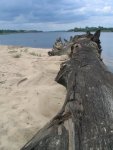 Since the beginning of the debate on how to solve the problem of the Włocławek dam stability, environmental non-governmental organizations came forth with their postulates and proposals of alternatives to the building of a new dam. Since the beginning of the debate on how to solve the problem of the Włocławek dam stability, environmental non-governmental organizations came forth with their postulates and proposals of alternatives to the building of a new dam.
A close look at the studies developed creates an impression that the concept of Nieszawa dam construction has been promoted as the only viable solution from the very start. Alternative options constitute a minute percentage of the huge volumes of documents concerning the solving of the Włocławek dam problem.
NGO's including Klub Gaja have introduced alternative options, the most favourable solution in our opinion.
A very detailed multicriterial option analysis was included in the Study of comprehensive solution of the problems with the Włocławek dam and reservoir. A projection of socio-economical and environmental outcomes published by WWF Poland in 2001, adopting 19 detailed criteria divided in two groups.
The study concludes with the following overall results of the multicriterial options evaluation:
“1. Option 0 (maintaining the status quo) 13,5 points and 9 negatives
2. Option I (construction of the Nieszawa dam) 11,9 points and 8 negatives
3. Option II (modernization of the Włocławek dam) 28,8 points and 2 positives
4. Option III (decommissioning of the Włocławek dam) 41,8 points and 12 positives
Option III has resulted as best, according to both socio-ekonomic and environmental criteria. The poor, third rating of Option I based on ecomomic and social factors reflects its many weaknesses.” 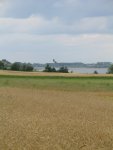
Thorough analysis of all costs that have been or have yet to be incurred, the account of benefits and losses as well as their respective distribution lead to conclusion that the Study... published by WWF Poland identifies the best solution to the Włocławek dam problem. The study reads:
“Option III – decommissioning the Włocławek dam and gradual transformation of the existing reservoir into a free flowing river, while maintaining the existing road crossing of the Vistula. (…)
With regard to the long-lasting nature and effectiveness of the adopted solution in eliminating all risks and problems entailed by the Włocławek dam construction, decommissioning the dam combined with gradual reduction of the ponding level and liquidation of the reservoir are the best solution.
Option III – The dismantling of the earth dam as part of the dam decommissioning will enable free passage of debris, and the liquidation of the reservoir will remove the main cause of slush ice jams. The option is the only one to solve definitely the problem of toxic waste and biogenous pollutants accumulating in the reservoir by reintegrating them into the natural process of matter circulation. Also, it is the only one that guarantees to restore the Vistula great natural value.”
It is right to add that the choice of the study-indicated option will result in the national budget, that means us, saving millions of złoty's worth of public money that have been spent every year for the operation and maintenance of the Włocławek dam and reservoir, and for plans to build the dam at Nieszawa.
|
![]() |
![]() |
![]() |
